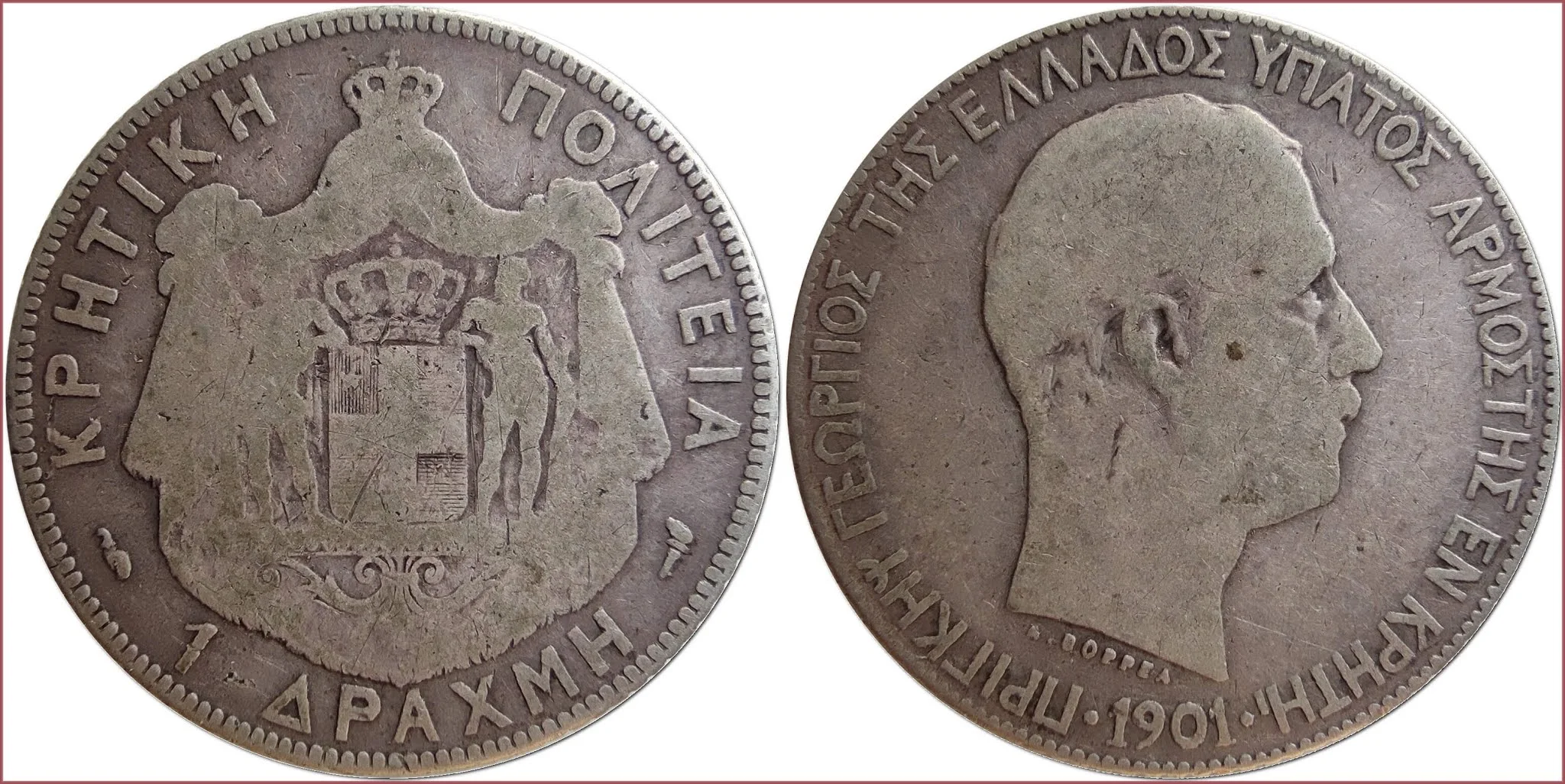DRACHMA: COIN OF CRETAN STATE
1 drachma (δραχμή), 1901: Cretan State
The Cretan State was established in 1898 (a year earlier an insurrection on the island of Crete forced the Ottoman Empire to declare war on Greece, which led United Kingdom, France, Italy and Russian Empire to intervene). It was the prelude to the island's final annexation to the Kingdom of Greece, which occurred in 1913.
Ruler: Prince George of Greece and Denmark — high commissioner of the Cretan State during its transition towards independence from Ottoman rule and union with Greece.
ΚΡΗΤΙΚΗ ΠΟΛΙΤΕΙΑ - 1 ΔΡΑΧΜΗ: Cretan State - 1 drachma.
Greater coat of arms of Cretan State.
Cornucopia and torch as marks of the Paris Mint and its chief engraver.
ΠΡΙΓΚΗΨ ΓΕΩΡΓΙΟΣ ΤΗΣ ΕΛΛΑΔΟΣ ΥΠΑΤΟΣ ΑΡΜΟΣΤΗΣ ΕΝ ΚΡΗΤΗ - 1901: Prince George of Greece, high commissioner of Crete - 1901.
Engraver: Alfred Borrel (the inscription Α ΒΟΡΡΕΛ under the portrait of the monarch).
Mintage: 500.000.
Paris mint (France).
- Silver (0.835): 23 mm - 5.0 g
- Reference price: 35$
COIN DRACHMA / DRACHM — WHERE & WHEN (coins catalog: by names & emitents)
- CRETAN STATE (1901): drachma = 100 lepton (lepta)
- ... a lot of different greece issuers
The drachma is one of the most common coins of the ancient world (Europe and Asia). First of all, it is a purely Greek coin. However, over time, its issuance began to be carried out by peoples who were closely associated with Greece.
All drachmas and imitations, very conditionally, can be attributed to several basic types:
- ANCIENT GREECE (ancient Greek polises / city-states, Hellenistic states...): from the 7th century BC
- CENTRAL AND EASTERN EUROPEAN CELTS
- PRE-ISLAMIC ARABIA
- ANCIENT CENTRAL ASIA AND CAUCASIA
- ROMAN PROVINCES
- PERSIA
- ANCIENT INDIA
- KINGDOM OF GREECE (1832-1924) + HELLENIC REPUBLIC (1926-2000): drachma = 100 lepton (lepta)
The word "drachma" is several thousand years old and in translation it means "handful" — handful (more precisely 6 pieces) of obols: initially metal sticks (early money substitute), later — silver coins. It is from the drachma that the names of several common modern currencies of the world and coins come: dirham, diram, dram...
An interesting observation: many numismatic catalogs, when referring to ancient Greek coins, use the term drachm as opposed to the designation of coins of relatively recent times (19th and 20th centuries) — drachma.

